I'm using Prismjs alongside Mdx for a code-related blog. I'm using it to show code blocks in a manner consistent with other blogs.
I'm running into an issue where the rendered code blocks (inside a <pre> element are too wide on my mobile layout. For now I am content to have things scroll on the horizontal axis. I'm 99% certain that the <pre> elements are what's breaking the layout because when I comment them out of the blog post, the layout works as expected.
Specifically, I'm using a package called prism-react-renderer (alongside Gatsby), and the code I have for the CodeBlock element (that handles the syntax highlighting) is more or less verbatim from the documentation for prism-react-renderer, but is included here for convenience:
import React from 'react'
import Highlight, { defaultProps } from 'prism-react-renderer'
import theme from 'prism-react-renderer/themes/nightOwl'
const CodeBlock = (props) => {
const className = props.children.props.className || ''
const matches = className.match(/language-(?<lang>.*)/)
return (
<Highlight {...defaultProps} code={props.children.props.children.trim()} language={
matches && matches.groups && matches.groups.lang
? matches.groups.lang
: ''
}
theme={theme}>
{({ className, style, tokens, getLineProps, getTokenProps }) => (
<pre className={className} style={{ ...style }}>
<code>
{tokens.map((line, i) => (
<div key={i} {...getLineProps({ line, key: i })}>
{line.map((token, key) => (
<span key={key} {...getTokenProps({ token, key })} />
))}
</div>
))}
</code>
</pre>
)}
</Highlight>
)
}
export default CodeBlock
This is the component used in the blog post template that handles rendering the .mdx files into HTML:
import React from 'react'
import { Link, graphql } from 'gatsby'
import { MDXRenderer } from 'gatsby-plugin-mdx'
import { MDXProvider } from '@mdx-js/react'
import Layout from '../components/layout'
import CodeBlock from '../components/code-block'
const components = {
pre: CodeBlock
}
const BlogPostTemplate = ({ data, pageContext, location }) => {
const post = data.mdx
const { previous, next } = pageContext
return (
<Layout>
*** Removed irrelevant component ***
<MDXProvider components={components}>
<div className='blog-post-wrapper'>
<article className='blog-post-content'>
<header>
<h1>
{post.frontmatter.title}
</h1>
<time dateTime={post.frontmatter.date}>
{post.frontmatter.date}
</time>
</header>
<MDXRenderer>{post.body}</MDXRenderer>
</article>
<footer className='blog-post-footer'>
*** Removed irrelevant components ***
</footer>
</div>
</MDXProvider>
</Layout>
)
}
export default BlogPostTemplate
I have tried a few different things: flex shrink, applying overflow-x: scroll and overflow-x: auto to both the <pre> element and its parents. When I apply a fixed width to the <pre> element and overflow-x: scroll I can get the behavior I want but I'd like to not have to use a fixed width on this if possible. The .css I have looks like this, including some obviously ineffectual styles:
.blog-post-wrapper {
display: flex;
flex-direction: column;
overflow-y: scroll;
overflow-x: scroll;
}
.blog-post-content {
flex-grow: 1;
margin-bottom: 2rem;
width: 100%;
display: flex;
flex-direction: column;
overflow-y: scroll;
overflow-x: scroll;
}
.blog-post-content .prism-code {
padding: 20px;
border: 3px solid red;
flex-shrink: 1;
overflow-y: scroll;
overflow-x: scroll;
}
I'll attach images of the way the <pre> element is rendering presently, in inspector:

And this is how it looks if I set a fixed width (in inspector):
